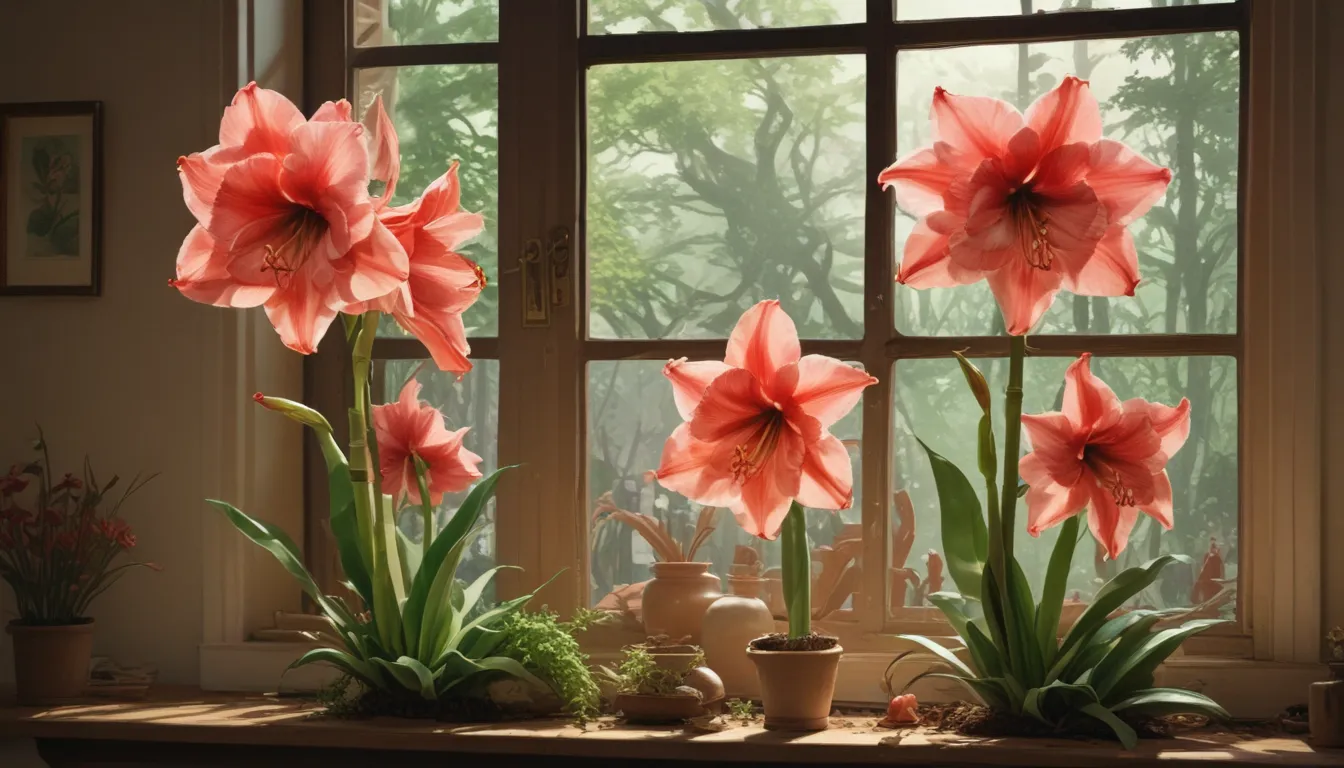How to Successfully Force Amaryllis Bulbs to Bloom Indoors

If you’re looking to add a burst of vibrant color to your home during the winter months, amaryllis bulbs are the perfect solution. With their stunning blooms in an array of hues, these tropical beauties are sure to brighten up any indoor space.
In this comprehensive guide, we’ll dive deep into the world of amaryllis bulbs and cover everything you need to know to successfully force them to bloom indoors. From choosing the right bulbs to caring for them after they flower, we’ve got you covered!
Amaryllis Basics
Amaryllis, belonging to the Hippeastrum genus, are large-flowered bulbs that are originally from tropical and subtropical regions. While they are typically hardy in zones 9 to 11, they can be easily forced to bloom indoors during the winter months.
With their large bulbs producing one to three flower stems, these plants are known for their striking star-shaped flowers and glossy dark green leaves. They are popular for their ability to bloom over an extended period, making them a favorite for indoor cultivation.
Choosing Bulbs
When selecting bulbs for forcing, opt for the largest ones available. These larger bulbs are more likely to produce multiple stems in their first year, resulting in a more abundant display of flowers.
Make sure to inspect the bulbs for any signs of damage, mold, or soft spots, and discard any that show these issues.
Cultivars to Select
With over 600 named cultivars, the Hippeastrum genus offers a wide variety of options for amaryllis lovers. Here are a few recommended cultivars to consider:
- Black Pearl: Producing deep burgundy flowers with a pearlescent sheen, ‘Black Pearl’ is a dramatic addition to any indoor garden.
- Cherry Nymph: Featuring deep cherry red blooms streaked with white, ‘Cherry Nymph’ is perfect for the holiday season.
- Sweet Lilian: With delicate orchid-like flowers in shades of rose to magenta, ‘Sweet Lilian’ is a charming choice for indoor cultivation.
These cultivars offer a range of colors and flower shapes to suit every taste.
Potting Up
For optimal growth and flowering, use a well-draining pot that is slightly larger than the bulb’s diameter. Bulbs thrive in a tight-fitting, root-bound environment, so don’t worry if the pot seems a bit snug.
Ensure the pot has drainage holes and add a layer of well-draining potting medium before planting the bulb. Position the bulb with one-third of its top above the soil line to prevent rot.
Water the soil thoroughly after planting and place the pot in a sunny location where it can receive at least six hours of bright light daily.
Temperature and Location
To encourage optimal growth and blooming, provide your amaryllis bulbs with temperatures between 60 and 80°F and bright, direct sunlight.
Consider using a heating mat to stimulate growth if needed, and rotate the pots periodically to ensure straight stem growth.
Once the flower scapes appear, move the pots to a cooler location with indirect light to prolong the flowering period.
Food and Water
After new growth emerges, water the soil regularly to maintain slight moisture levels. Avoid overwatering to prevent root rot and allow the soil surface to dry between waterings.
Feed your bulbs with a diluted, balanced fertilizer every three to four weeks after flowering to support healthy growth and blooming.
Waxed Bulbs
For a low-maintenance option, consider using waxed amaryllis bulbs that require no water or soil. Simply place the bulb in a bright, indirect light location and enjoy the blooms as they emerge.
Waxed bulbs typically bloom four to six weeks after shipping and can be disposed of after flowering.
Forcing in Water
If you prefer growing your amaryllis in water, use a bulb or flower vase filled with gravel to support the bulb. Ensure the bulb does not sit in water to prevent rot.
Rotate the vase regularly to promote even growth and maintain water levels to one inch below the bulb base. Change the water weekly and provide bright, indirect light for optimal growth.
Care After Flowering
After your amaryllis bulbs finish flowering, cut the scapes and leave the leaves intact to support bulb energy production. Move the pots outdoors once nighttime temperatures remain above 50°F and provide regular watering and feeding.
To prepare the bulbs for the next flowering cycle, induce dormancy by withholding water and fertilizer. After dormancy, bring the bulbs back indoors to a sunny location and resume watering to encourage new growth and blooming.
For more detailed care tips after flowering, refer to our additional guide on caring for amaryllis bulbs.
Conclusion
Forcing amaryllis bulbs to bloom indoors is a rewarding and enjoyable experience that can bring color and beauty to your home during the winter months. With the right care and attention, you can enjoy these stunning blooms year after year.
Try different cultivars, experiment with different growing methods, and share your experiences with other plant enthusiasts. By following these tips and guidelines, you can successfully force amaryllis bulbs to bloom indoors and enjoy their beauty throughout the winter season.
What are your favorite amaryllis cultivars for indoor cultivation? Share your thoughts in the comments below and continue exploring the world of growing amaryllis bulbs with our additional guides on tips for growing and propagating these tropical beauties.
Let’s keep those vibrant blooms coming!





